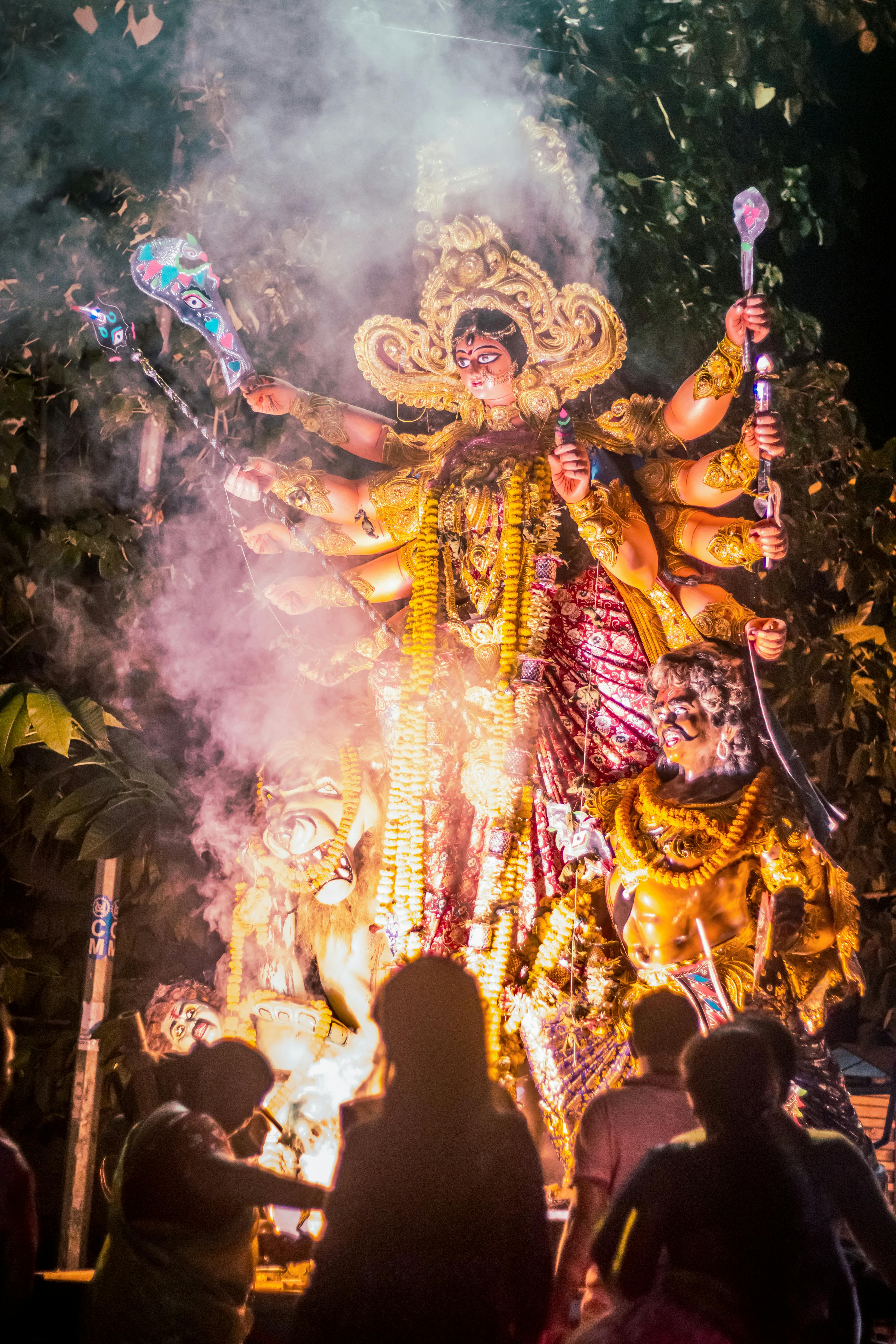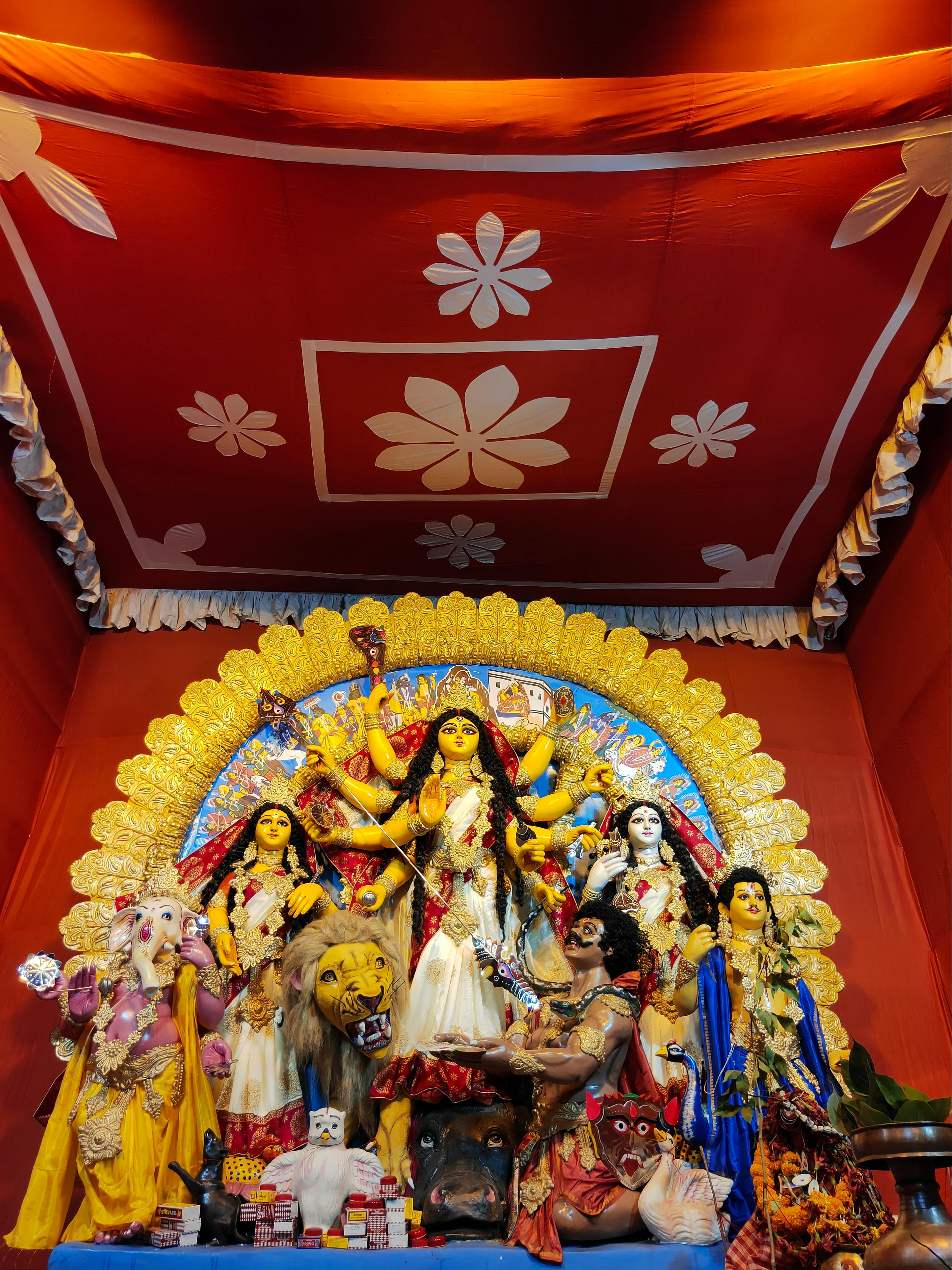Today, let’s embark on a journey to uncover the identity of a remarkable Hindu goddess who encompasses vast realms of knowledge, music, art, and wisdom. As we delve into the depths of ancient Hindu mythology, we will unravel the mysterious essence of this divine being who holds a revered place in the hearts of millions. Brace yourself for an exploration of cultural richness and celestial marvels as we unveil the enigmatic presence of the Hindu goddess who embodies the very essence of intellect, creativity, and enlightenment.
Table of Contents
Who Is The Hindu Goddess Of Knowledge, Music, Art, And Wisdom?
1. Introduction
1.1 Overview
In Hindu mythology, there are numerous gods and goddesses worshiped for various attributes and qualities. One such prominent goddess is Saraswati, who is revered as the deity of knowledge, music, art, and wisdom. Saraswati holds a significant place in Hindu culture and her worship is observed in various forms throughout the world.
1.2 Significance
Saraswati is considered to be the embodiment of knowledge and wisdom. She is the patron goddess of learning, music, art, and intellect. The significance of Saraswati lies in her ability to bestow her devotees with the power to acquire knowledge, the creativity to express themselves through art and music, and the wisdom to make informed decisions in life. She is regarded as the ultimate source of inspiration and guidance for those seeking intellectual growth and artistic pursuits.

2. Hinduism
2.1 Background
Hinduism is one of the oldest religions in the world, with a rich history and diverse set of beliefs and practices. It encompasses a wide range of spiritual traditions and customs, all of which are deeply rooted in the ancient Vedic texts. The religion emphasizes the concept of dharma, or duty, and the pursuit of self-realization through various paths such as devotion, knowledge, and meditation.
2.2 Beliefs and Practices
Hinduism encompasses a vast array of beliefs and practices, with a focus on the interconnectedness of all beings and the worship of multiple deities. It recognizes that different deities represent various aspects of the divine and can be worshiped accordingly. Rituals, prayers, and offerings form an integral part of Hindu worship, which is often performed in temples or at home altars. The religious scriptures, such as the Vedas and Puranas, provide guidance on the proper conduct of rituals and the significance of various deities.
3. Hindu Deities
3.1 Pantheon of Gods and Goddesses
Hinduism has a vast pantheon of gods and goddesses, each with their own unique qualities and attributes. These deities are associated with different aspects of life and are invoked for blessings, protection, and guidance. The supreme deities in Hinduism are Brahma, Vishnu, and Shiva, often referred to as the Trimurti. Alongside these main deities, there are also numerous lesser deities, including Saraswati, who are revered and worshiped by the devotees.
3.2 Role and Functions
The Hindu deities play a vital role in the lives of their devotees. They are believed to possess divine powers and are revered as the ultimate source of creation, preservation, and destruction. Each deity has a specific role and function, representing various aspects of life, nature, and the cosmos. Saraswati, as the goddess of knowledge, music, art, and wisdom, is recognized for her ability to bestow intellectual prowess, artistic talents, and spiritual enlightenment.

4. Saraswati
4.1 Mythology and Origins
Saraswati has a rich mythology and is deeply rooted in ancient Hindu scriptures and legends. According to Hindu mythology, Saraswati is believed to be the daughter of Lord Brahma, the creator of the universe. She is often depicted as a graceful woman adorned with white clothing and seated on a lotus flower, symbolizing purity and transcendence. Her association with the celestial river Saraswati, which is said to have flowed in ancient India, further enhances her significance.
4.2 Attributes and Symbols
Saraswati is portrayed as a goddess with several attributes and symbols that represent her divine qualities. She is commonly depicted holding a veena, a traditional Indian musical instrument, symbolizing her association with music and art. In her other hands, she holds a book, symbolizing knowledge and wisdom, and a rosary, symbolizing spirituality and meditation. Her white clothing represents purity, and the lotus flower she sits on symbolizes enlightenment and spiritual growth.
5. Knowledge
5.1 Goddess of Learning
Saraswati is revered as the goddess of learning in Hinduism. It is believed that she possesses immense knowledge and is the ultimate source of wisdom. Devotees pray to her for the acquisition of knowledge, intelligence, and academic success. Students, artists, and scholars often seek her blessings before important exams, performances, or creative endeavors. Saraswati is regarded as the embodiment of the highest form of knowledge that transcends worldly limitations.
5.2 Wisdom and Intellect
In addition to being the goddess of learning, Saraswati is also associated with wisdom and intellect. She is believed to grant her devotees the ability to think critically, make sound decisions, and gain deep insights into various aspects of life. Her presence is sought after by those seeking guidance, clarity of thought, and the development of a spiritual intellect. Saraswati’s blessings are perceived as essential for both personal and spiritual growth, enabling individuals to navigate through life’s challenges with wisdom and grace.

6. Music and Art
6.1 Patron of Music
Saraswati is the patron goddess of music and is closely associated with the arts. She is considered to be the inspiration behind all creative endeavors, including music, dance, poetry, and painting. Artists, musicians, and performers often seek Saraswati’s blessings for success, creativity, and the ability to express themselves through their chosen art form. Her influence is believed to enhance the artistic abilities and provide the necessary inspiration for the fulfillment of creative aspirations.
6.2 Connection to Art
Saraswati’s connection to the arts extends beyond music. She is believed to inspire and guide artists in various disciplines, including painting, sculpting, writing, and performing arts. Artists often create beautiful works of art dedicated to Saraswati, using her imagery and symbols to invoke her presence. Through her association with art, Saraswati transcends the boundaries of human expression and serves as a muse for creative souls, fueling their passion and enabling them to connect with the divine through their art.
7. Worship and Festivals
7.1 Saraswati Puja
Saraswati Puja is a significant festival dedicated to the worship of Goddess Saraswati. It is celebrated throughout India and in Hindu communities worldwide. The festival typically falls during the Hindu month of Magh, which usually corresponds to January or February on the Gregorian calendar. Devotees offer prayers, perform rituals, and seek blessings from Saraswati during this auspicious occasion. Students, teachers, and artists gather to pay homage to the goddess and seek her blessings for success in their respective fields of study and creativity.
7.2 Vasant Panchami
Vasant Panchami, also known as Basant Panchami, is another important festival associated with Saraswati. It is celebrated during the Hindu month of Magh and marks the arrival of the spring season in India. On this day, devotees worship Saraswati, seeking her blessings for knowledge, wisdom, and the beginning of new endeavors. The festival is often celebrated with vibrant yellow decorations, as yellow is considered an auspicious color associated with Saraswati. Schools and educational institutions particularly celebrate Vasant Panchami by conducting special ceremonies and prayers dedicated to the goddess.
8. Temples and Iconography
8.1 Temples dedicated to Saraswati
Across India and the world, there are numerous temples dedicated to Saraswati where devotees can offer their prayers and seek her divine presence. The most prominent of these is the Sharada Peeth located in the state of Jammu and Kashmir. Other significant temples dedicated to Saraswati include the Koothanur Saraswathi Temple in Tamil Nadu, the Basara Gnana Saraswathi Temple in Telangana, and the Saraswati Temple in Pushkar, Rajasthan. These temples serve as important pilgrimage sites for Saraswati devotees, providing a space for worship, reflection, and spiritual connection.
8.2 Depiction in Art
Saraswati is often depicted in various forms of art, including sculptures, paintings, and statues. Artists represent her in graceful poses, adorned with her traditional symbols such as the veena, book, and rosary. The depictions of Saraswati in art capture her serene and wise presence, showcasing her as a figure of divine knowledge and inspiration. These artistic representations not only serve as visual aids for devotion and worship but also convey the beauty and significance of Saraswati’s qualities to the wider community.
10. Conclusion
In conclusion, Saraswati, the Hindu goddess of knowledge, music, art, and wisdom, holds immense significance in Hindu culture. Through her representation as the embodiment of learning, creativity, intellect, and spirituality, Saraswati inspires and blesses her devotees with the qualities necessary for personal and spiritual growth. Her worship and festivals, along with the dedicated temples and iconic art, serve to honor and acknowledge her divine presence in the lives of individuals who seek her guidance and blessings. By embracing Saraswati as the ultimate source of wisdom and inspiration, one can unlock their full potential in the pursuit of knowledge, creativity, and a meaningful existence.